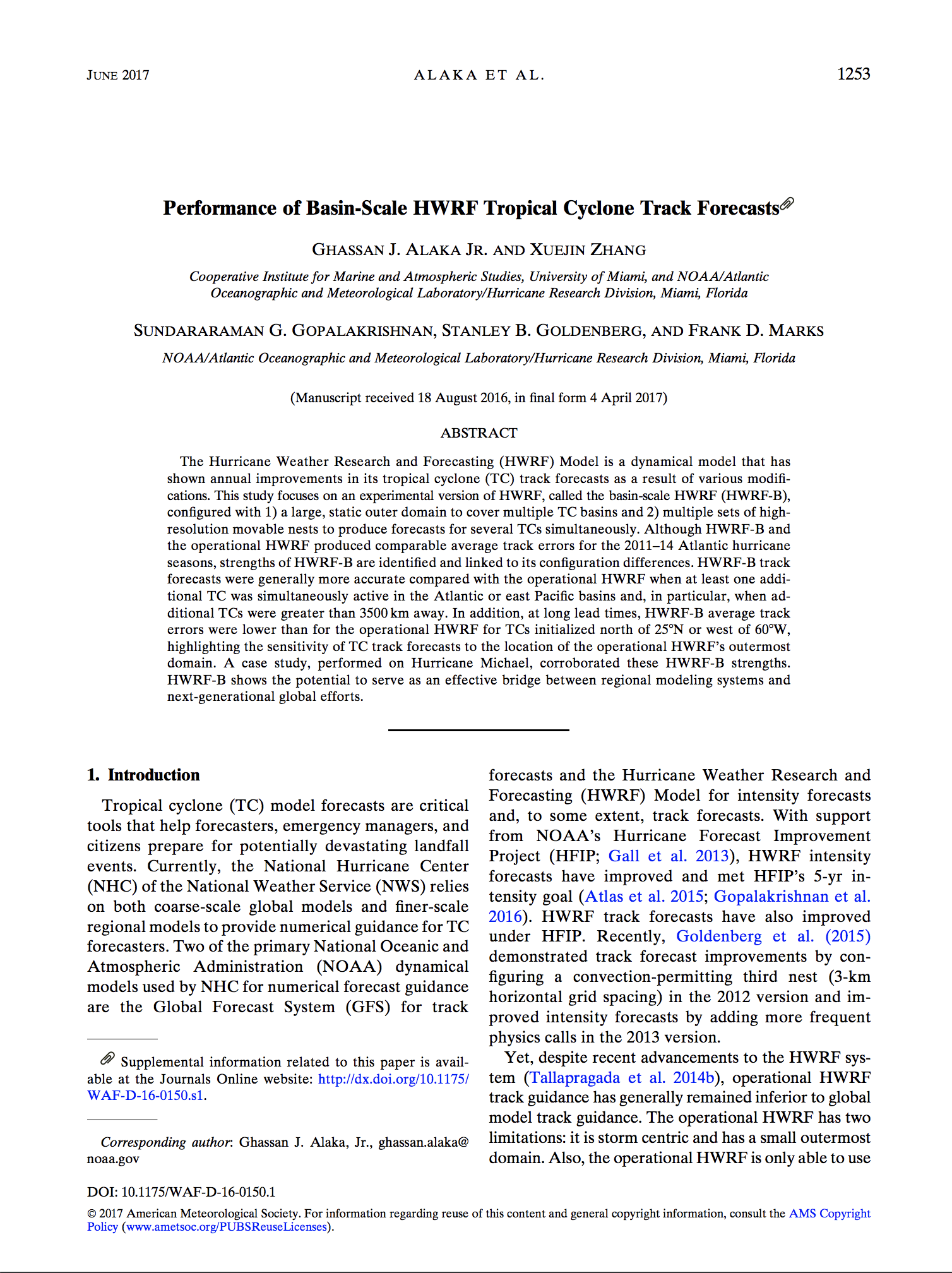Abstract:
The Hurricane Weather Research and Forecasting model (HWRF) is a dynamical model that has shown annual improvements to its tropical cyclone (TC) track forecasts as a result of various modifications. This study focuses on an experimental version of HWRF, called the “basin-scale” HWRF (HWRF-B), configured with: (1) a large, static outer domain to cover multiple TC basins; and (2) multiple sets of high-resolution movable nests to produce forecasts for several TCs simultaneously. Although HWRF-B and the operational HWRF produced comparable average track errors for the 2011-2014 Atlantic hurricane seasons, strengths of HWRF-B are identified and linked to its configuration differences. HWRF-B track forecasts were generally more accurate compared to the operational HWRF when at least one additional TC was simultaneously active in the Atlantic or East Pacific basins and, in particular, when additional TCs were greater than 3500 km away. In addition, at long lead times, HWRF-B average track errors were lower than for the operational HWRF for TCs initialized north of 25°N or west of 60°W, highlighting the sensitivity of TC track forecasts to the location of the operational HWRF outermost domain. A case study, performed on Hurricane Michael, corroborated these HWRF-B strengths. HWRF-B shows potential to serve as an effective bridge between regional modeling systems and next generational global efforts.
